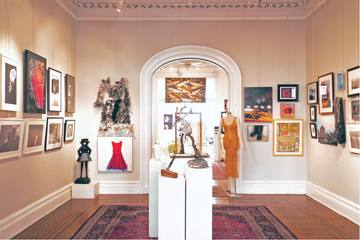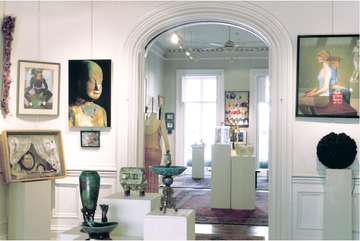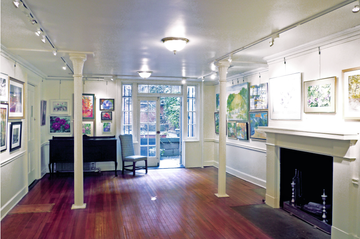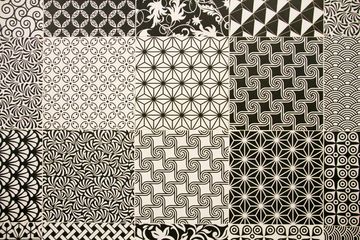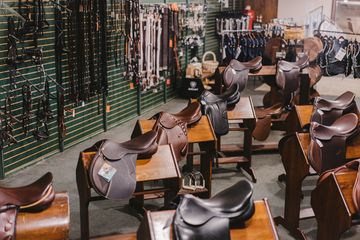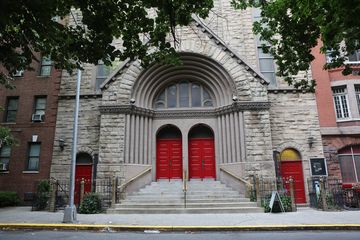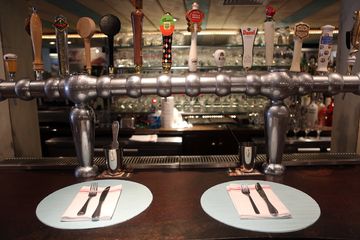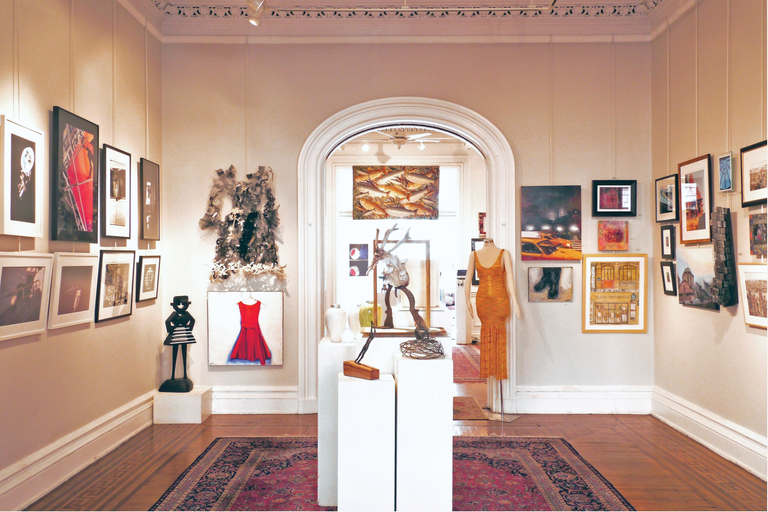
“We come together on the common ground of arts, letters, and women owning their own destinies,” stated Executive Director Dawn Delikat.
For well over a century, Pen and Brush has been dedicated to supporting women in the visual arts and literature. The organization was founded by two sisters and painters, Janet and Mimi Lewis, who were frustrated with being barred from art societies solely on the basis of their gender. Knowing of so many talented women suffering a similar fate, the siblings decided to create Pen and Brush to “stop asking for permission and forge their own way in the city.”
Though the group was nomadic for thirty years, it was able to purchase its first location in 1923. Decades later in the early 1960s, the ladies celebrated paying off their mortgage by dressing in their finest ballgowns and burning the contract in the fireplace. “Women persevering is as much of our understory as anything else.” The organization carries the torch passed down by these remarkable women, whose members include First Lady Ellen Axson Wilson, First Lady Eleanor Roosevelt, and a number of Nobel laureates.
Today, Pen and Brush’s goal remains the same, albeit adapted to twenty-first-century circumstances. As such, it makes space for both women and non-binary voices — better reflecting our evolving conceptions of the gender spectrum — and works to bring in the diversity that has been kept out of the canon “not for lack of talent, but for lack of access.”
To this end, Pen and Brush functions as an art gallery and a book publisher, where visual artists and writers from across the world can submit their work.
The group evaluates submissions, seeking pieces “that need to be supported,” either for expressing something that has not been said before or for demonstrating an incredibly high skill level. This has meant giving career-making opportunities to veteran artists looking to break the glass ceiling of their field, gifted students just out of an MFA program, and self-taught artists who received no formal introduction to the art world.
Achieving true equality in the arts and letters may seem a daunting task, but Pen and Brush is tireless in its mission to give a platform to brilliant women and non-binary creators. “We can’t give up on them. We have to build into the future so that we can keep passing that torch, so maybe someday, it won’t be needed.”
